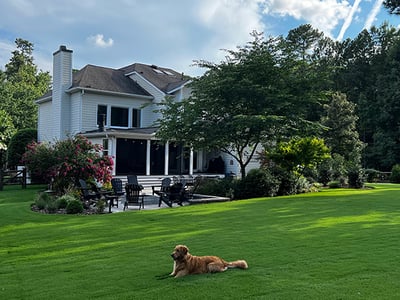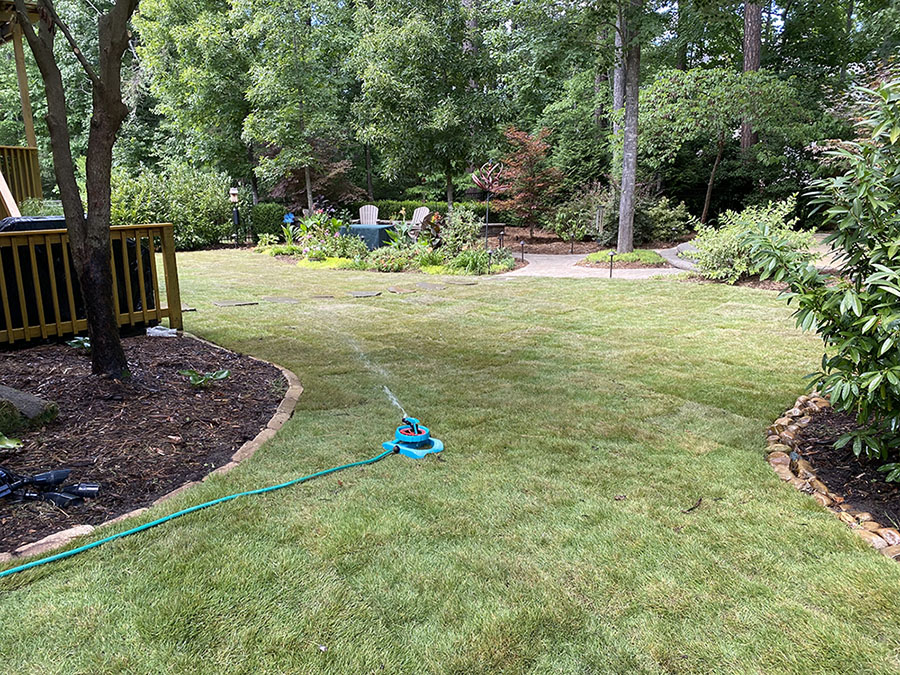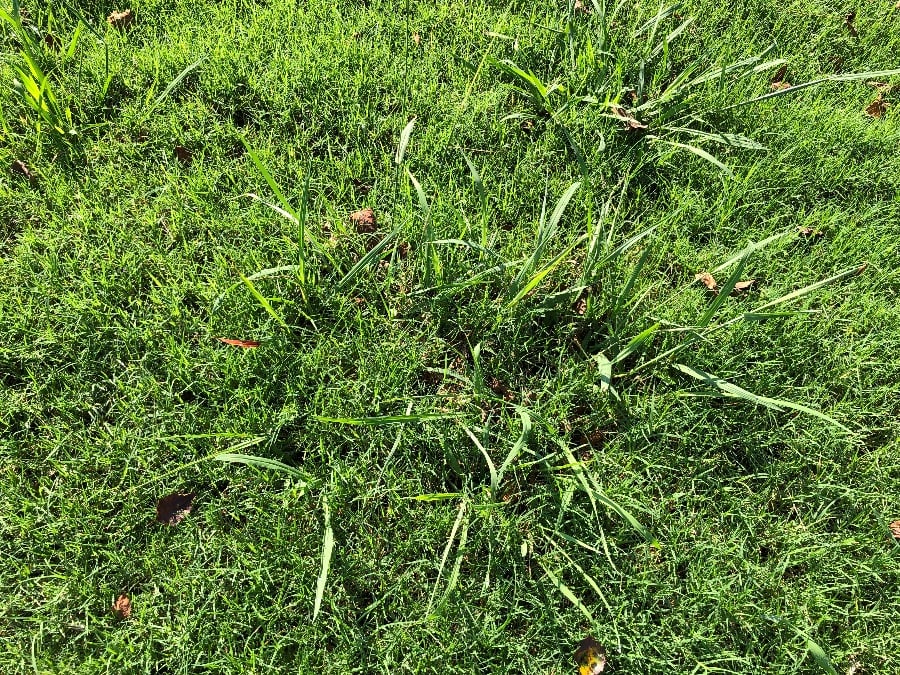

Whew! It feels like the extreme heat has broken here in the Southeast. Most warm-season lawns should have sailed through the heat better than we humans did. If your lawn didn't, there are probably underlying compaction issues that can be addressed next summer with aeration, compost topdressing, and extra watering of those "hot spots."
I think it's safe to say that now that it's September, let's shift gears!
Here's a teaser highlighting the 3 big changes this month:
- Stop fertilizing your lawn with high-nitrogen fertilizer. It's time to let your grass slowly go dormant as the seasons change into cooler nights and shorter days.
- Likewise, stop topdressing and aerating until your lawn greens up again in spring.
- Start spreading pre-emergent herbicide in mid-September to prevent winter weeds. For warm-season lawns we recommend 0-0-7 with pre-emergent since it has no nitrogen.
Scroll through this entire article for in-depth details.
Fall Armyworm Alert
Armyworms could be a menace until the first frost this fall. Learn the signs, scout daily, and act quickly if you see them. Read what to look for in our Fall Armyworm article.
To prevent armyworms and feed your lawn, we recommend our 5-10-30 with Acelepryn insecticide for all lawns. It's safely low in nitrogen and the phosphorus and potassium will benefit overall health. 
Fertilizing Tips
- Stop fertilizing your lawn! Do not fertilize, topdress, or aerate warm-season lawns in September or anytime in the fall; wait until spring. Let your lawn slowly go dormant over the next several months.
- As mentioned in the beginning, we recommend pre-emergent herbicide starting in mid-September. For warm-season lawns, avoid pre-emergents with nitrogen so you don't push extra growth when it should be going dormant. "Winterizers" you'll find in big box stores have too much nitrogen. Our 0-0-7 with Barricade is a safe pre-emergent for warm-season lawns.
- Since the threat of fall armyworms is real, we recommend our 5-10-30 + Acelepryn insecticide for Zoysia and Bermuda lawns. The low nitrogen (the 5 in the ratio) is safe for warm-season lawns.
- Order fertilizer for pick up or delivery or check out our Lawn Coach subscription.
Read the Best Times to Apply Fertilizer >>
Weeding Tips
- The window for applying pre-emergent herbicide is open from September 15th through October 15th. Pre-emergent will prevent winter weed seeds from rooting. It kills off the first root that comes out of the seed and you'll never see the rest of the weed germinate. It's like magic!

👍 Rule of Thumb: Don't apply pre-emergent to new sod because it will also inhibit your new lawn from rooting. Apply it after one full growing season when your lawn is fully rooted in and you can no longer see the seams. Read all the details under the product linked to in the big red button above. - For weeds you see now in established lawns, apply post-emergent liquid herbicides for your type of lawn. Read the label and follow instructions.
👍 Rule of Thumb: It's okay to apply a post-emergent liquid herbicide after you've mowed your new lawn 3 to 4 times. - Pulling by Hand: September offers lovely temperatures for being outside and pulling weeds. I enjoy listening to college football games, and I find that pulling weeds while listening to my team serves as a therapeutic counterbalance to the game's stress.
- Mowing: Mow those weeds down before they go to seed. Mowing is an effective way to suppress weeds because it cuts off flower/seed heads and that stops weeds from making more weeds, thus breaking the life cycle. If you have bad weeds, mow on a weekly routine and don't let the weeds get ahead of you.
- Mulch suppresses weed seeds in flower beds. Spread your favorite mulch 2-4" thick and keep it 1-2" away from touching the trunks or stems of your plants.
- Dallisgrass is one of the rare perennial grassy weeds that infest lawns. You will need a shovel to attack this monster. Read how to get rid of it in your lawn and flower beds: September Weed of the Month: Dallisgrass
This is classic Dallisgrass behavior: to thoroughly embed itself in your lawn, but leave an open center so the lawn grows through it.
Mowing Tips
Keep mowing your Bermuda, Zoysia, and Centipede lawns until they go dormant. It's critical to keep up this practice so that your lawn looks great next spring.
- Continue to mow warm-season lawns at the recommended height until they go dormant in a few months. Look up the height for your lawn here: Summer Mowing for Warm Season Grasses
- Mowing New Sod: Did you lay new sod? Our saying is to "mow as soon as there is something to mow." In fact, mowing will promote growth! So don't be timid. Mow it! Read: How Soon Should I Cut My Grass?
- To prevent compaction, don't tread the same old route every time. Rather, mix it up and mow your lawn in a different pattern every week. Read André's blog where he'll teach you our 7 tips to Master Lawn Mowing for a Lush and Healthy Lawn.
If you have a Tall Fescue lawn (the best cool-season lawn for the Southeast), check out September Lawn Tips for Tall Fescue.
Got questions? Leave a comment below!
Come back next month for October Lawn Tips for warm-season lawns!
If you're new here, subscribe to our emails to get this information in your inbox every month.





